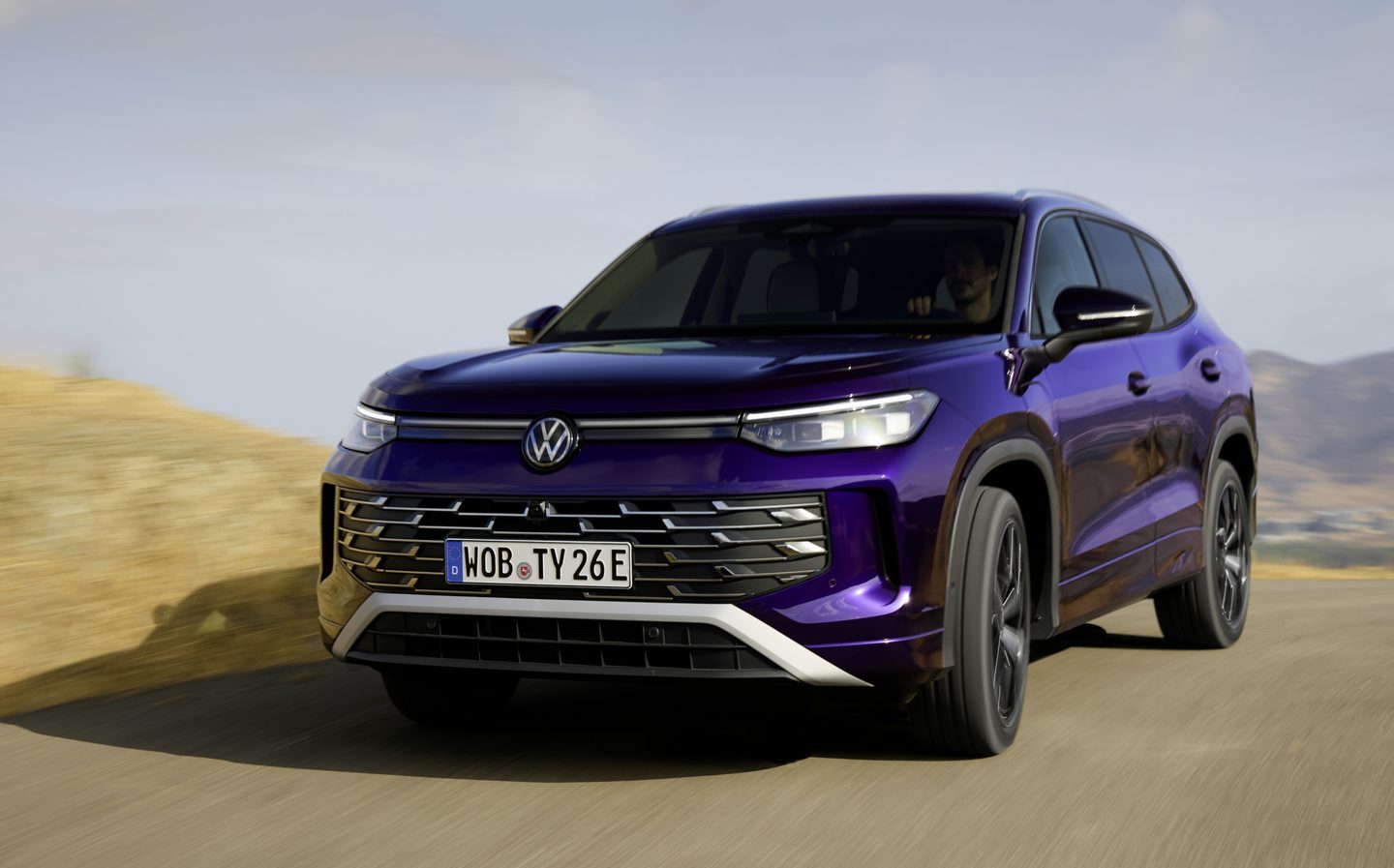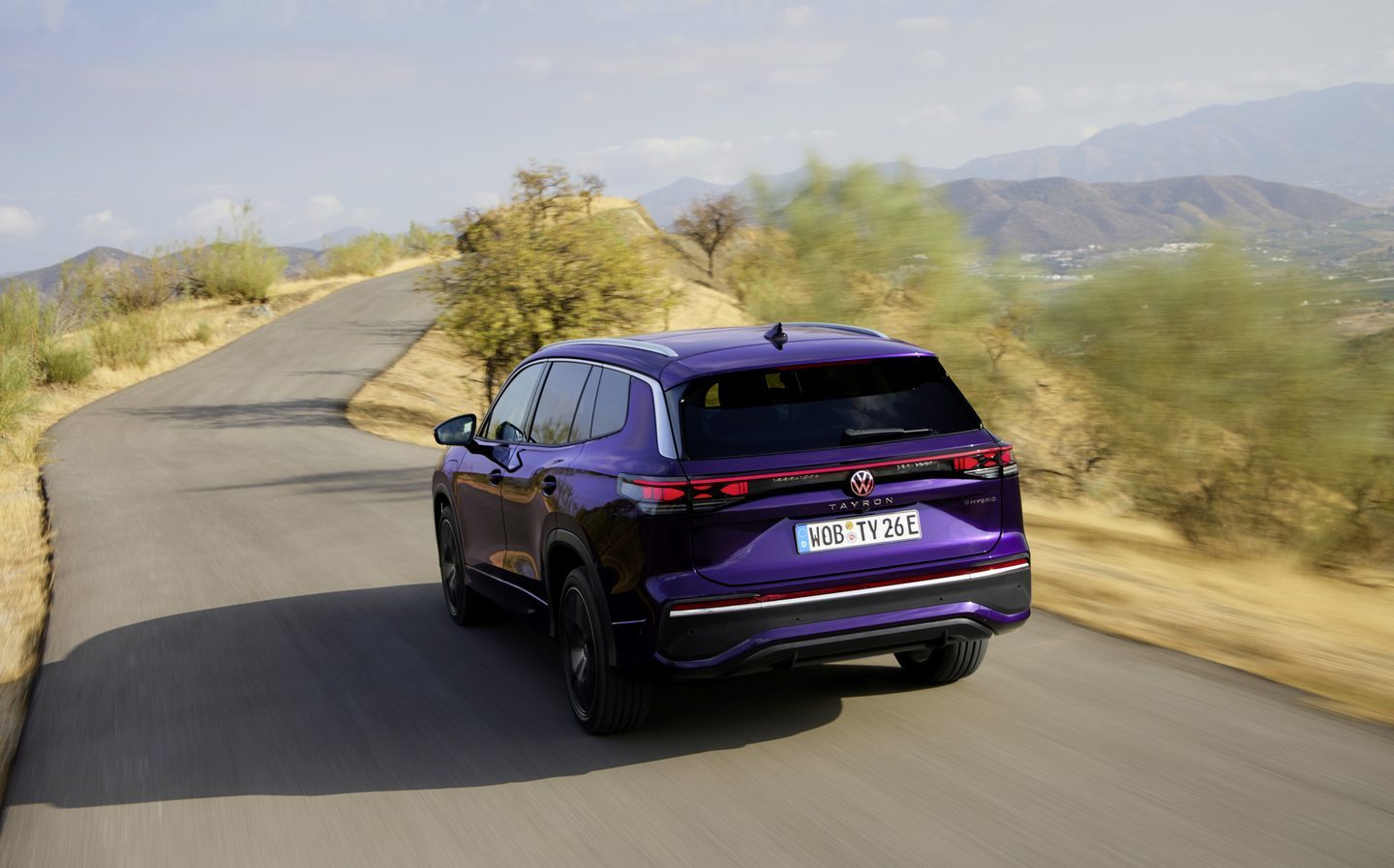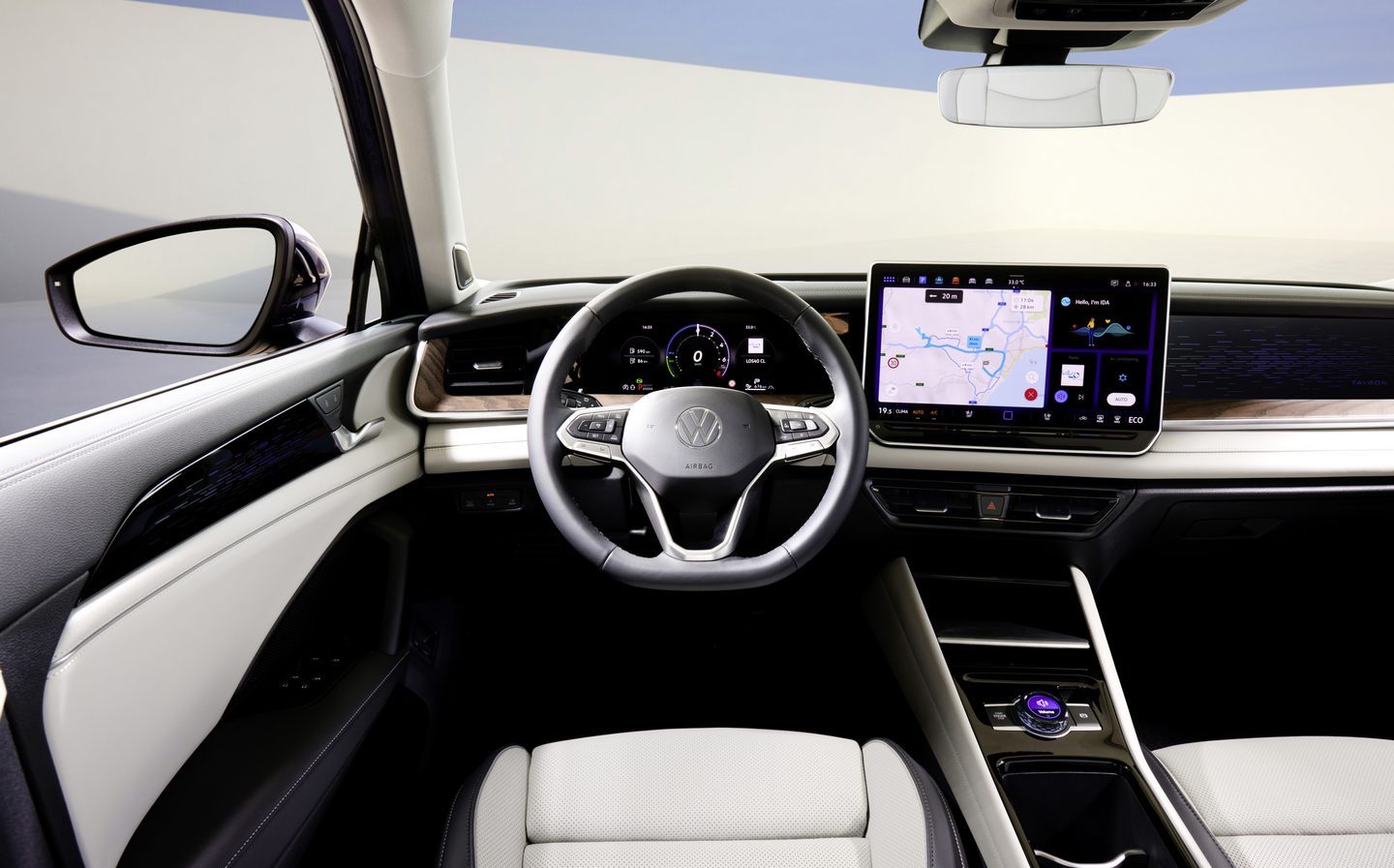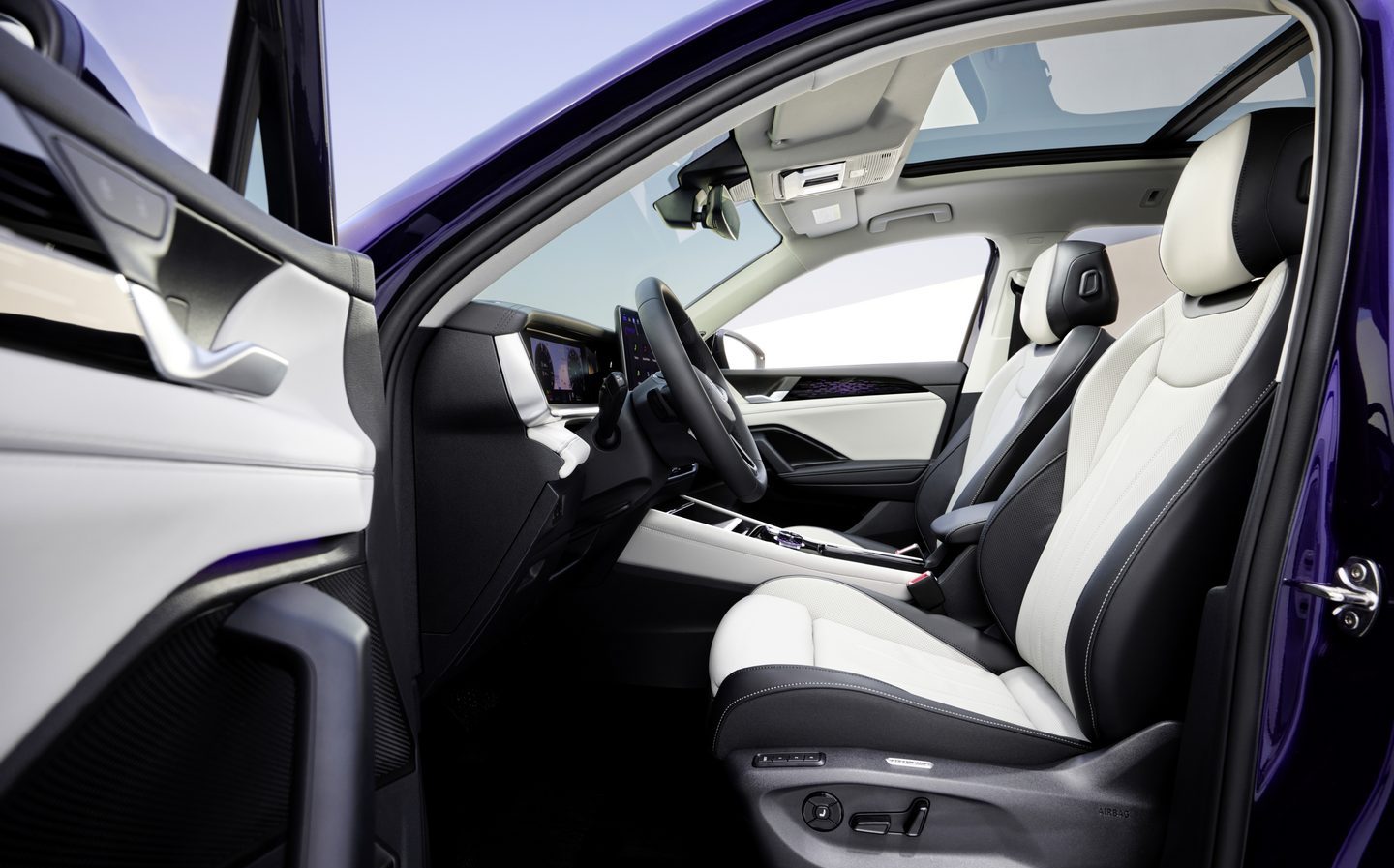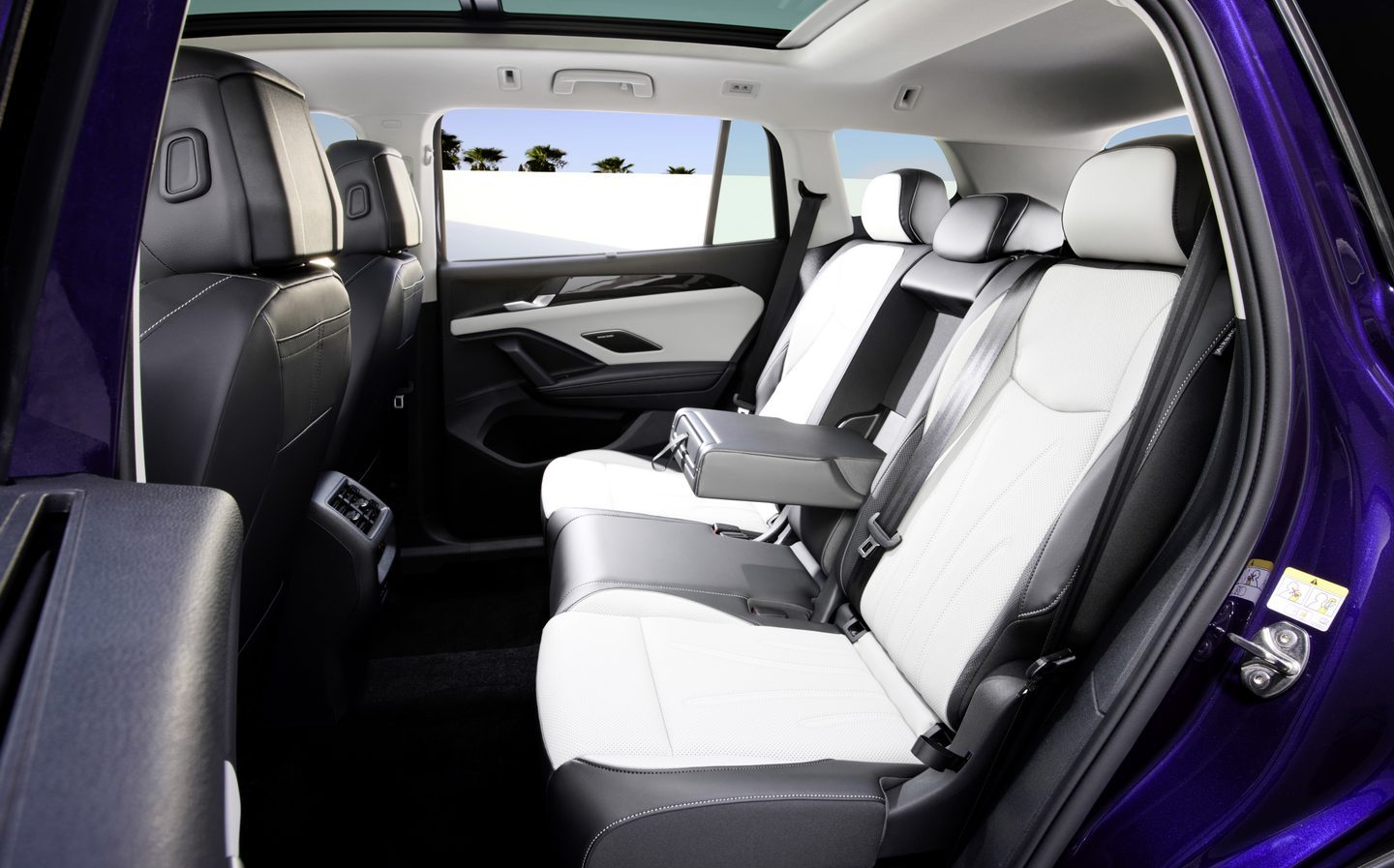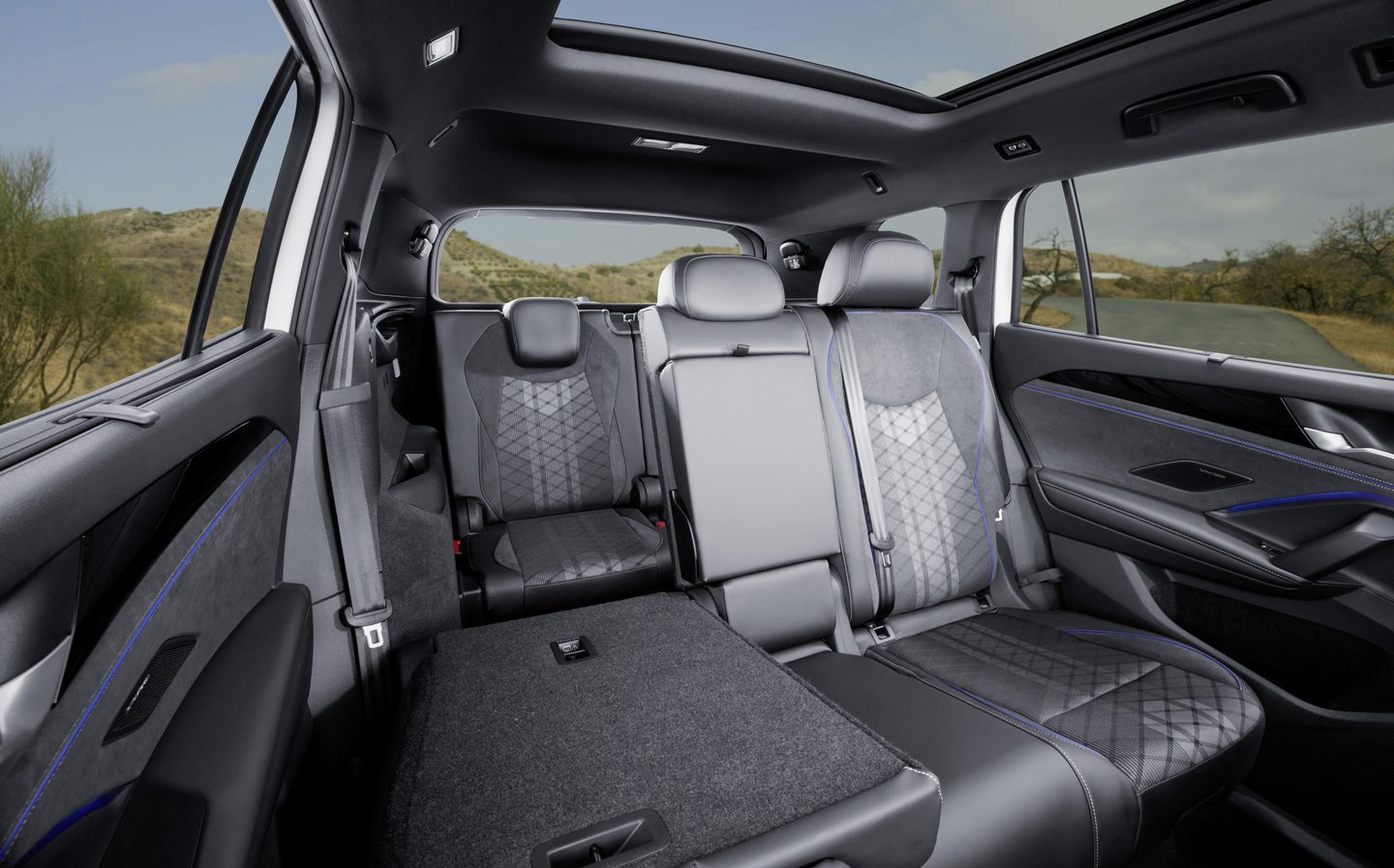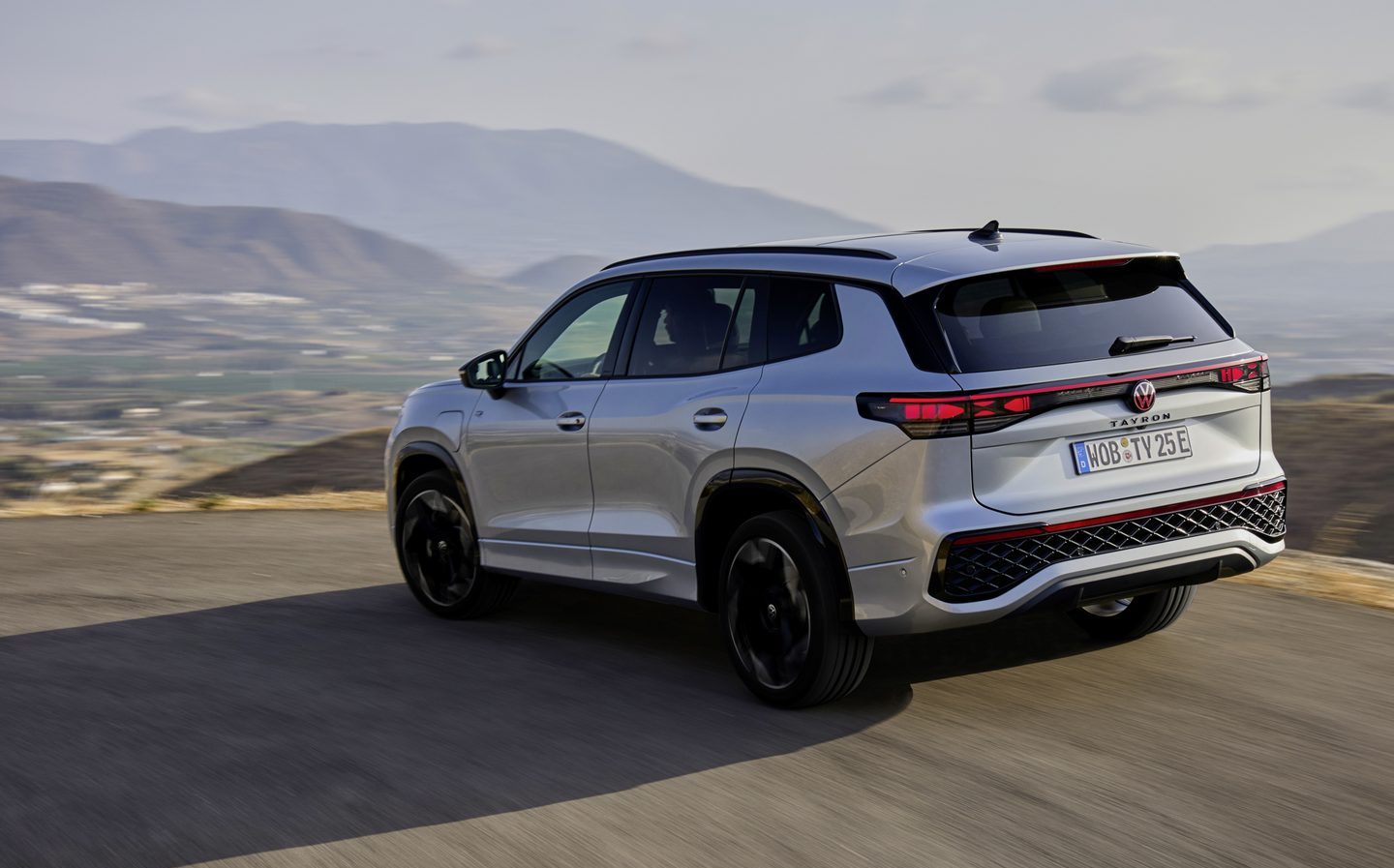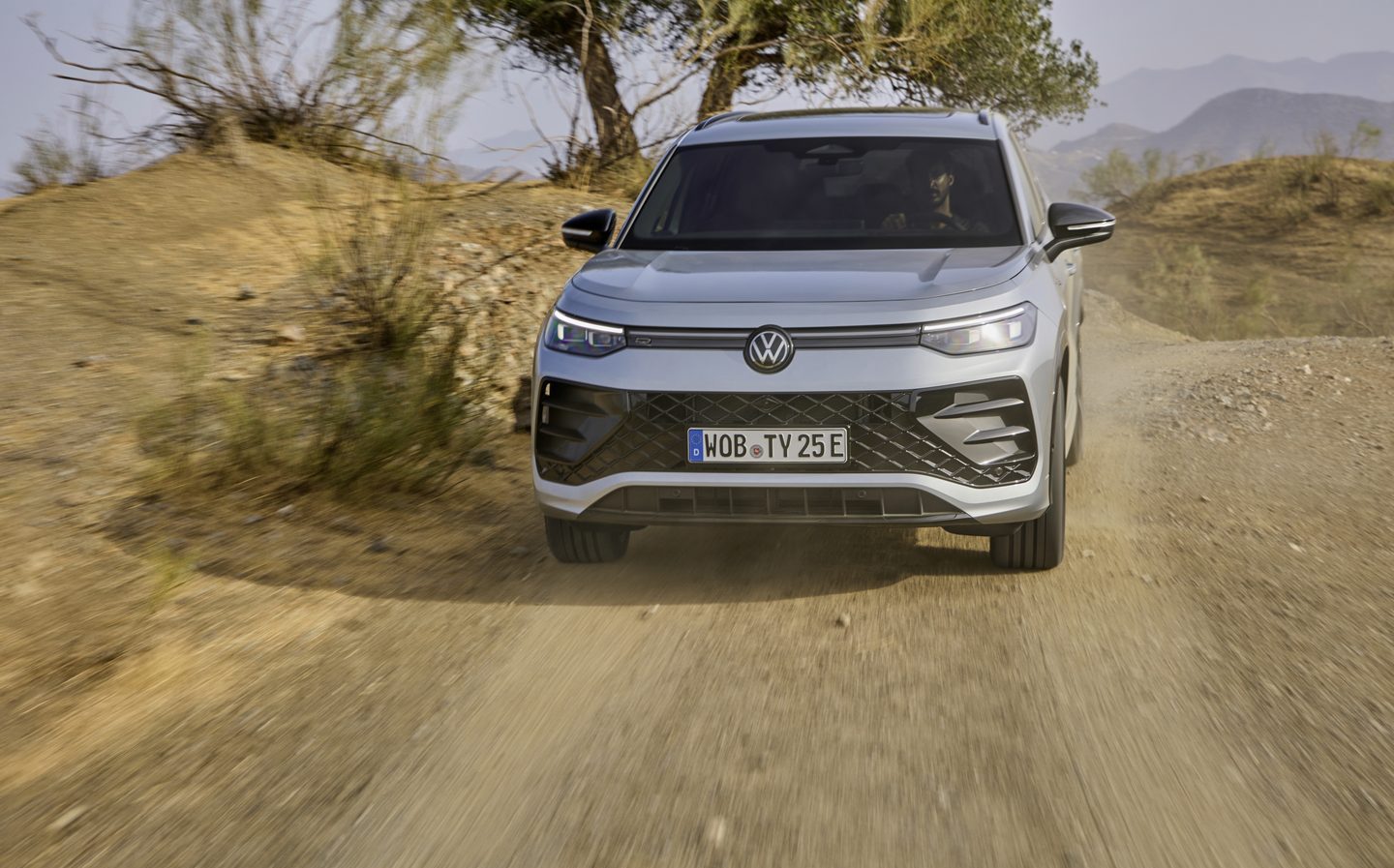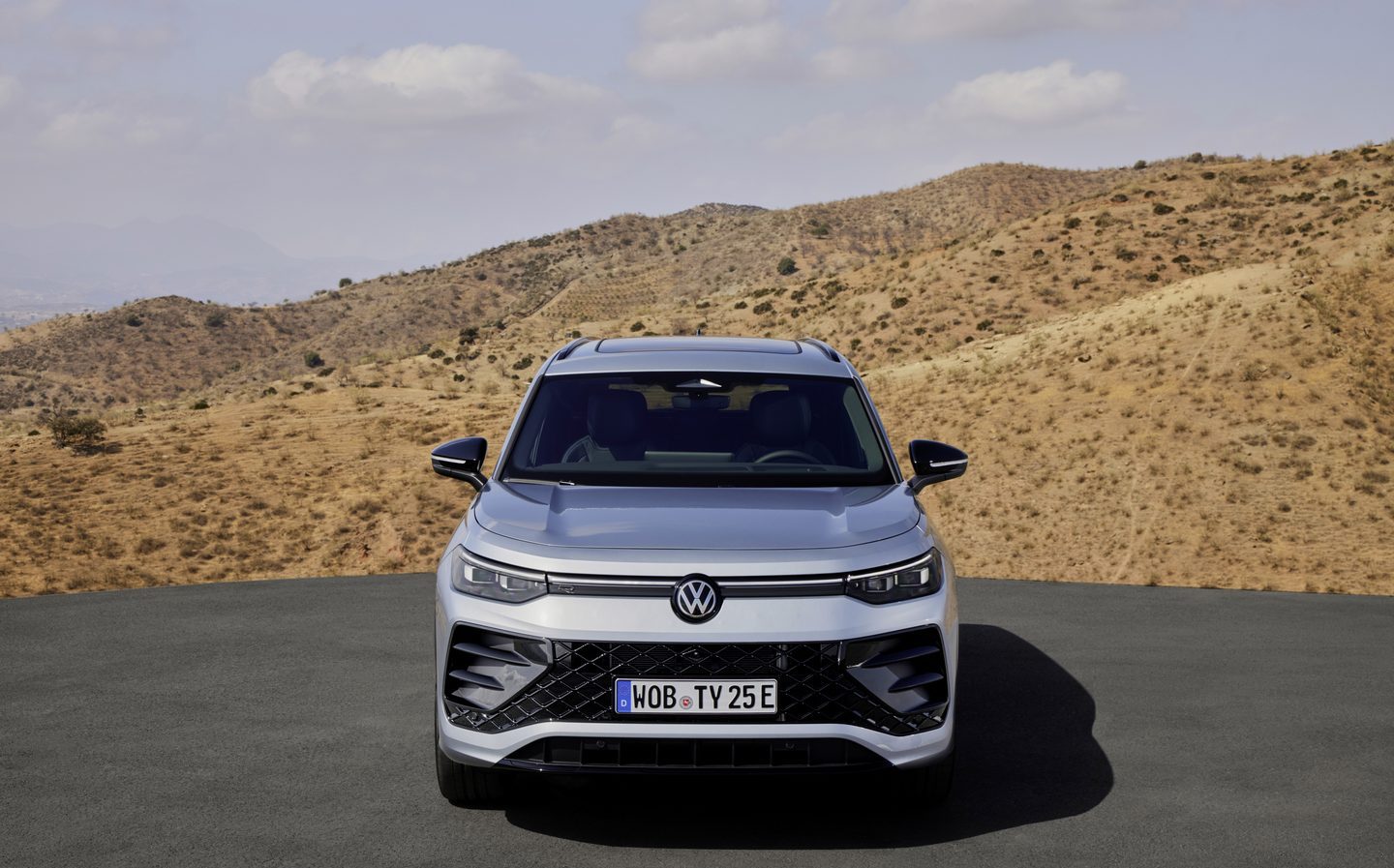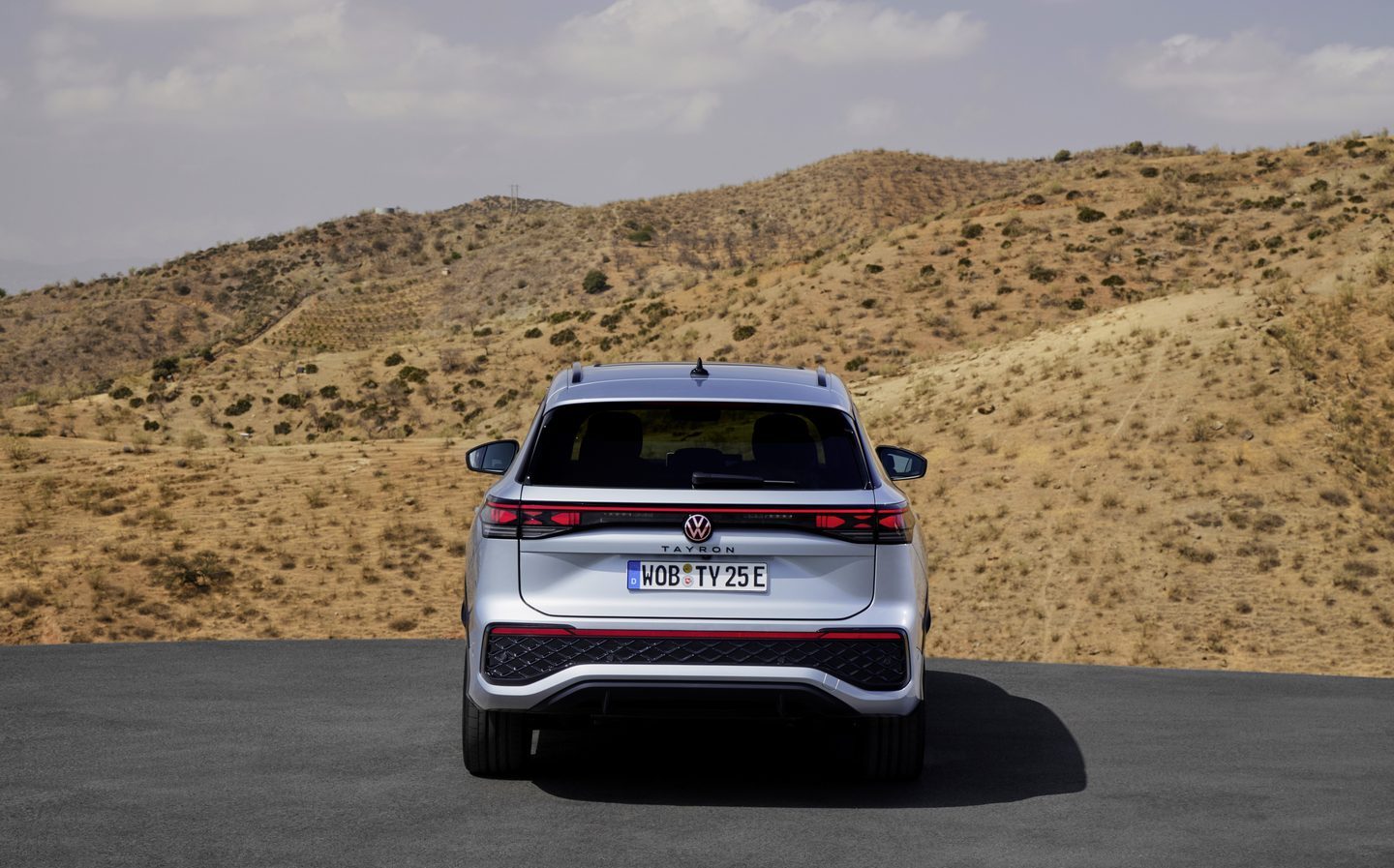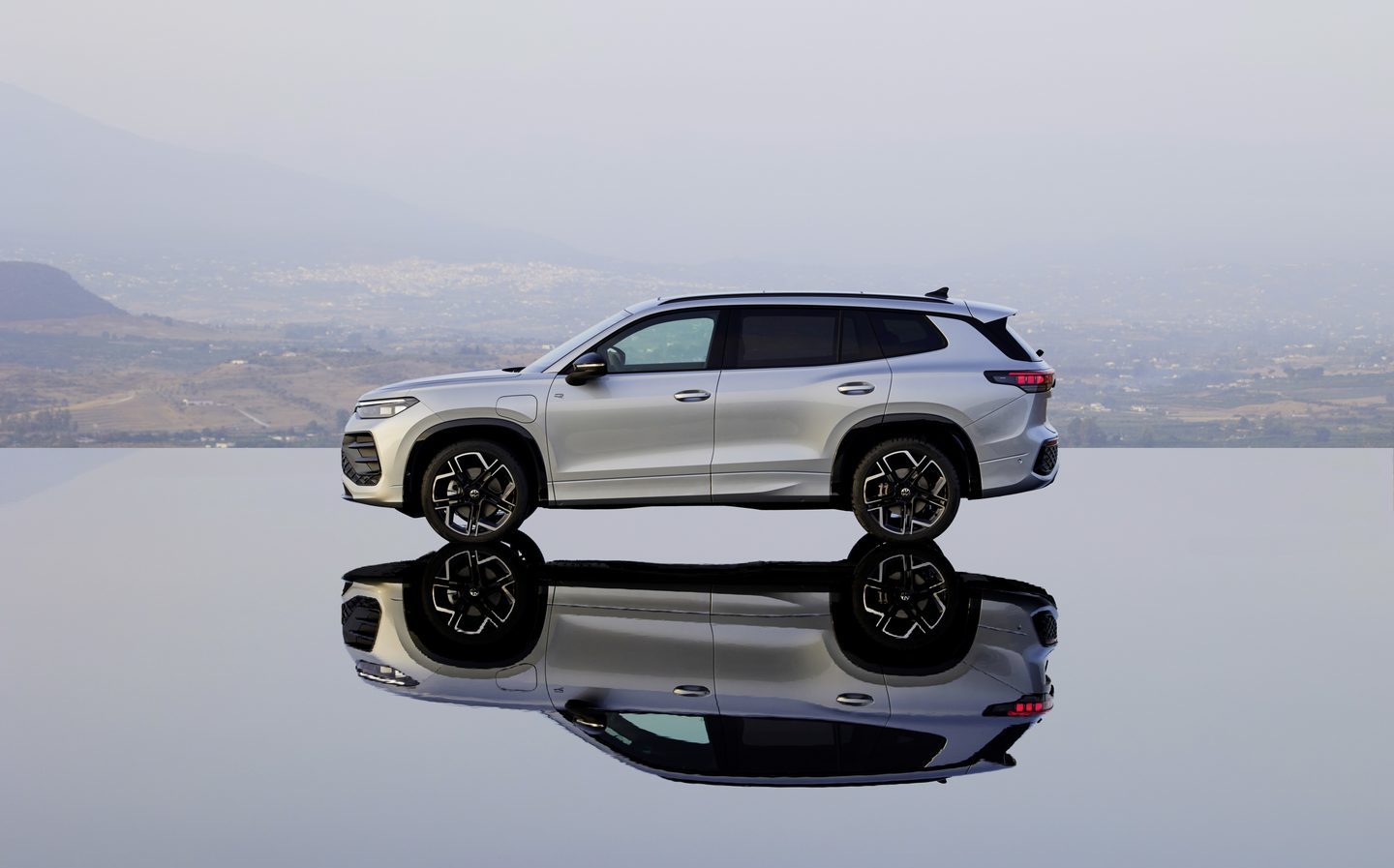Seven-seat Volkswagen Tayron revealed as Tiguan Allspace replacement
Yes, it is really just a longer Tiguan
Volkswagen has taken the wraps off a new seven-seat SUV designed to fill the gap left by the discontinued Tiguan Allspace, though the German carmaker would rather you thought of the new Tayron as closer in concept to the more expensive Touareg at the top of its line-up.
Sharing its styling language with the new mid-sized Tiguan, the Tayron will similarly be offered with a wide range of engine options to suit a large swathe of buyers.
Don’t call it a stretched Tiguan
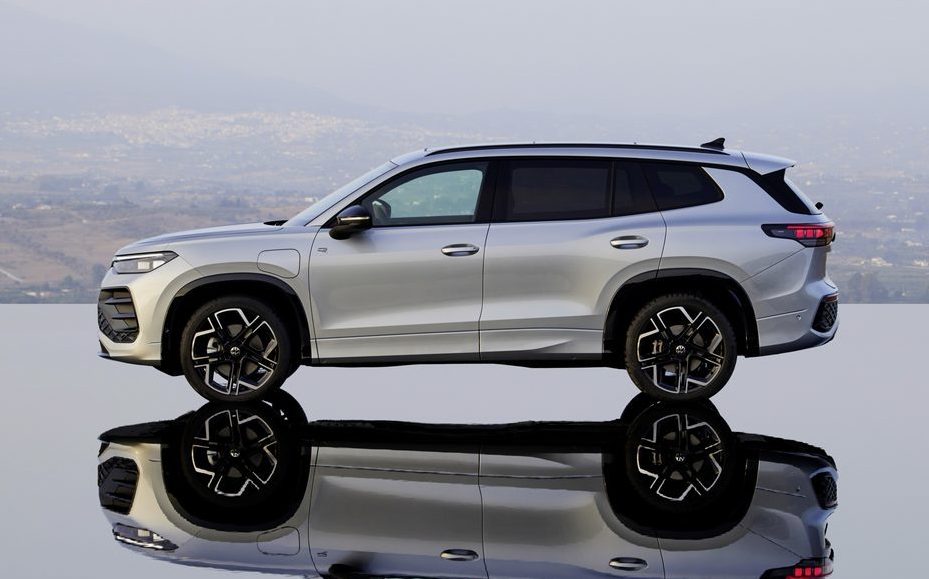
Though the Tayron is built on the same core underpinnings as the Tiguan, it’s longer by 231mm.
As well as that extra length, the front and rear wheels have been pushed apart by 114mm, in a bid to increase passenger space. The Tayron is a little wider than the Tiguan, too, but has an identical overall height, lending the newcomer an elongated appearance that better balances the car’s proportions.
Looked at from the front or rear, the Tiguan and Tayron don’t look drastically different. Look closely, though, and you notice the differences between the trim lines are more pronounced, especially for the sporty-looking R-Line variant.
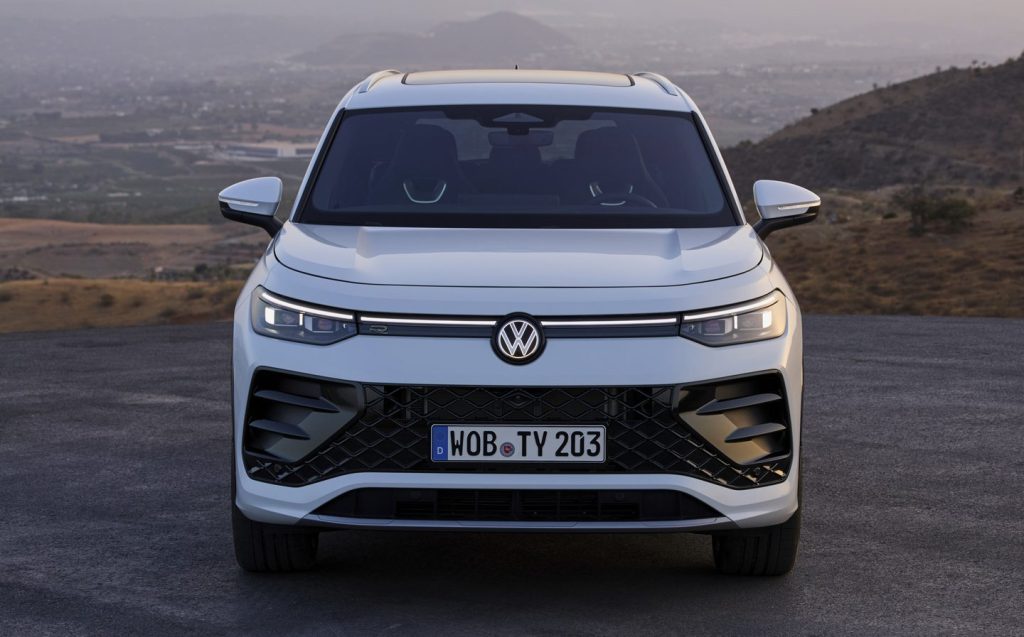
Design highlights include illuminated VW logos and high-tech “IQ. Light” HD matrix headlights, while alloy wheels up to 20in can be specified, depending on trim level. Elegance and R-Line specifications were mentioned at the Tayron’s introduction but the range is likely to expand in time to mirror that of the Tiguan — potentially including Life and Match options as well.
Focus on luxury and space inside
Don’t expect the Tayron to be offered in a particularly budget-friendly specification, though, as it’s touted as a luxury vehicle and its cabin differs a little from that of the Tiguan to emphasise the point. For example, real wood veneers are available, as is genuine leather upholstery.
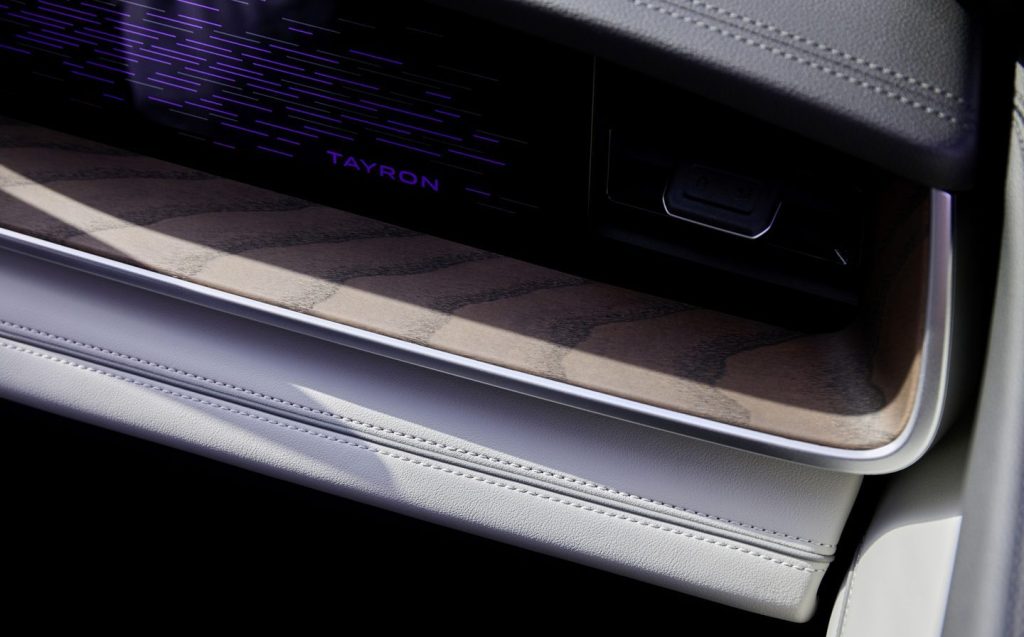
Of course, the cabin is dominated by the digitalisation of the dashboard. The instruments are on a sharp 10.25in display and the minimum size for the standalone touchscreen is 12.9in across the diagonal. Most Tayrons will feature a 15in touchscreen, though, paired with a head-up display, while the built-in “Ida” voice assistant features ChatGPT integration.
All this is effectively the same as found in the Tiguan, so buyers with a need for a larger car will be keener to know about the space behind the front seats in the Tayron.
For starters, the second row of seating can slide fore and aft, and the backrests adjust for tilt as well as height, so it promises to be a comfortable place to sit.
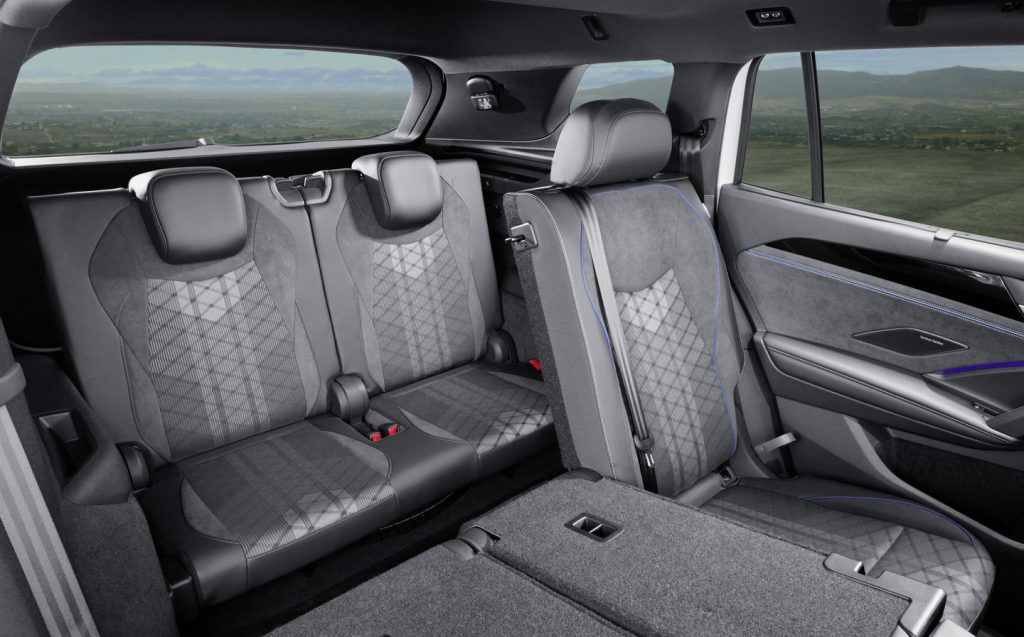
The seatbacks split and fold flat if necessary and there’s a specific function to move them forward to allow entry to the third row.
In Volkswagen’s words, the two rearmost seats are for “smaller guests on board”, so don’t expect to comfortably fit any adults back there.
Many buyers will no doubt fold that extra row down and make use of the massive boot instead – it holds up to 850 litres in five-seat guise, or up to 885 litres if you choose the five-seat model in the first place. For reference, the Tiguan manages up to 652 litres, so the Tayron is significantly more capacious.
Petrol, diesel, mild-hybrid or PHEV
Adding further to the Tayron’s versatility is an ability to tow up to 2,500kg. There’s a specific trailer driving mode and if you order the towbar, which can be folded away under the bumper when no in use, Trailer Assist is added to the wealth of other driving assistance systems. This dramatically eases the task of reversing with a trailer attached.
Parking without a trailer can be controlled remotely or done automatically depending on other options fitted.
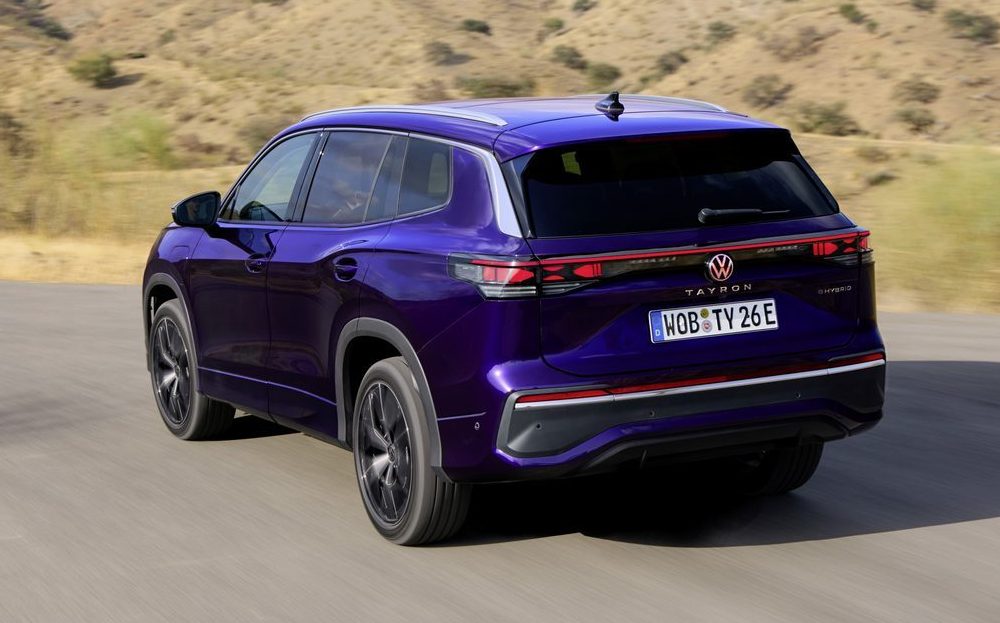
The maximum towing figure varies by powertrain, of course, so only Tayrons fitted with VW’s 4Motion all-wheel drive and either a TSI petrol or TDI diesel engine can achieve that top rating.
The 2-litre diesel engine is available in 147bhp and 190bhp states of tune (only the latter offered with all-wheel drive), while the 4Motion-only 2-litre petrol option can be had with either 201bhp or 261bhp.
One of the best sellers is likely to be the rather more modest 1.5-litre “eTSI” option featuring mild-hybrid tech to enhance efficiency and produce up to 147bhp. This puts its power through the front wheels only, with a small electric motor assisting the engine under acceleration. As with all variants of the Tayron, it uses an automatic gearbox with its selector located on the dashboard.
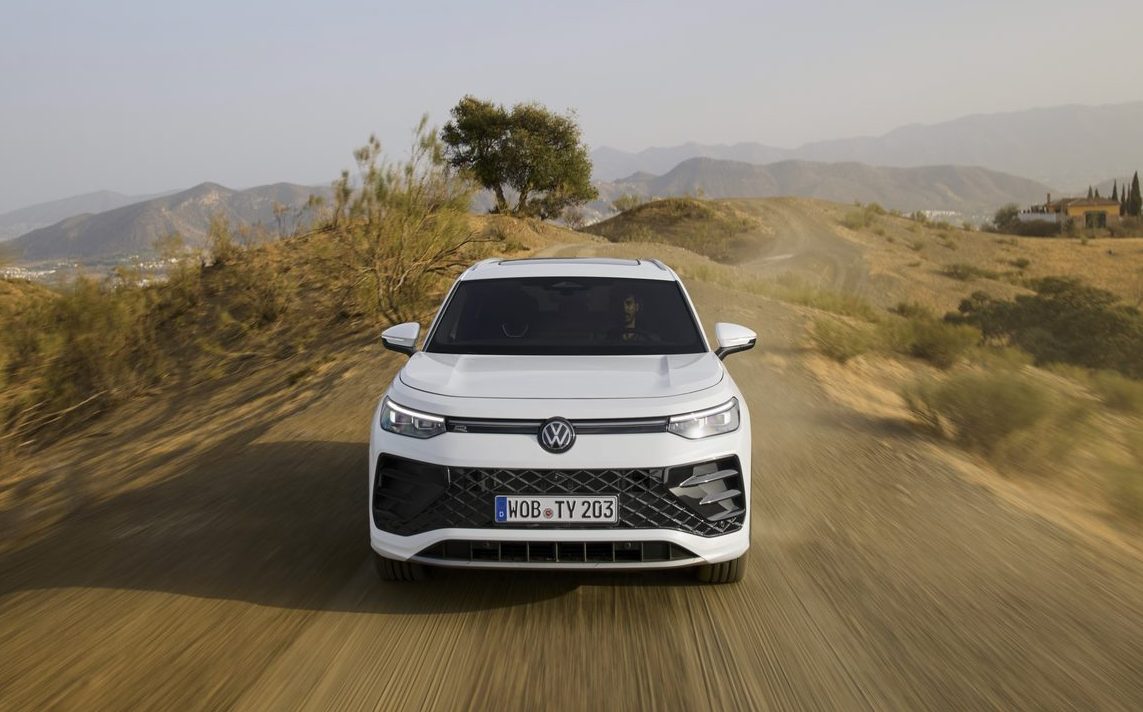
Finally, there’s the Tayron eHybrid, using a 1.5-litre petrol engine, powerful electric motor and separate drive battery. Available in 201bhp and 268bhp guises, this plug-in hybrid is technically the most potent Tayron offered at this stage, yet, curiously, it cannot be had with 4Motion all-wheel drive.
Neither can the PHEV option be paired with a seven-seat layout due to the packaging requirements of the hybrid components, making it a strict five-seater.
On the plus side, Volkswagen is expecting an official electric-only range in excess of 60 miles, and to maximise the chances of an owner actually utilising that aspect of the car, it can be recharged at up to 11kW on an AC outlet or 50kW on a public DC rapid charger.
UK pricing for the Tayron has yet to be announced but it is expected to command a premium over the equivalent Tiguan. For reference, that car costs between £34,075 and £48,220. The Volkswagen Tayron will launch in the UK in March 2025.
Related articles
- If you found this article about the new Volkswagen Tayron interesting, you might want to read our review of the Volkswagen Tiguan as well
- You might also be interested to read our review of the Volkswagen ID.5 GTX
- New Volkswagen California camper based on car underpinnings and available as a hybrid
Latest articles
- Should I buy a diesel car in 2025?
- F1 2025 calendar and race reports: The new Formula One season as it happens
- Zeekr 7X AWD 2025 review: A fast, spacious and high tech premium SUV — but someone call the chassis chief
- Denza Z9GT 2025 review: Flawed but sleek 1,062bhp shooting brake from BYD’s luxury arm
- Extended test: 2024 Renault Scenic E-Tech review
- Best-selling cars 2025: The UK’s ten most popular models of the year so far
- Audi A6 Avant 2025 review: Trusty executive estate ticks expected boxes, and there’s still a diesel option
- Keir Starmer eases pressure on carmakers to sell EVs in response to ‘global economic headwinds’
- Ferrari 12Cilindri Spider review: Heady blend of traditional and futuristic becomes even more intoxicating after lid is removed


